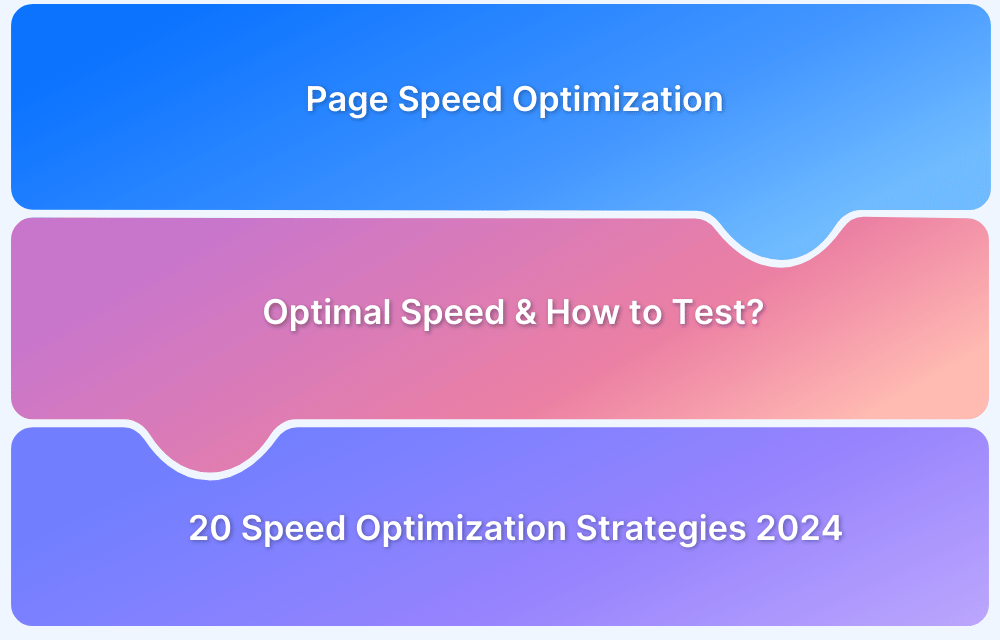My Insight Hub
Your go-to source for daily insights and updates.
Speed Demons: Boosting Your Website's Performance Like a Pro
Unlock expert tips to supercharge your website's speed and outpace the competition. Discover the secrets to top-notch performance now!
Top 10 Techniques to Optimize Your Website Speed
In today's digital landscape, optimizing your website speed is crucial for enhancing user experience and improving your search engine rankings. Here are the top 10 techniques to achieve this:
- Leverage Browser Caching: Enable browser caching to store some data locally in users' browsers, reducing load times on subsequent visits. For more details, check out this MDN documentation.
- Minify CSS, JavaScript, and HTML: Reduce the size of your files by removing unnecessary characters. Tools like CSS Minifier can help streamline your code.
- Optimize Images: High-resolution images can slow down your site. Use image optimization tools such as TinyPNG to reduce image sizes without losing quality.
- Use a Content Delivery Network (CDN): CDNs distribute your content across multiple servers around the world, ensuring faster delivery times for global users. Check out Cloudflare for CDN services.
Additionally, improving your website's speed optimization can be achieved through various techniques:
- Reduce Server Response Time: Aim for a server response time of under 200ms. Optimize your server configuration to achieve faster responses. For more insights, visit Web.dev.
- Utilize Asynchronous Loading for CSS and JavaScript: Instead of blocking rendering, allow scripts to load asynchronously by adding 'async' or 'defer' attributes. Learn how this works at Google Developers.
- Implement Gzip Compression: This method reduces the size of your files and improves load times significantly. Refer to OptimizeSmart for guidance.
- Avoid Redirects: Each redirect creates additional HTTP requests and increases load time. Streamline your URLs where possible to eliminate unnecessary redirects. Learn more about management practices at Search Engine Journal.

How to Measure and Improve Your Website's Loading Time
Measuring your website's loading time is crucial for providing a great user experience and improving your SEO rankings. Start by utilizing tools like Google PageSpeed Insights, GTmetrix, or Pingdom. These platforms give you detailed reports on your site's performance, including metrics such as First Contentful Paint (FCP) and Time to Interactive (TTI). To analyze your site's loading time, simply enter your website URL into any of these tools and review the insights they provide. A score above 90 is ideal, while anything below 50 indicates significant improvements are needed.
Once you have measured your loading time, the next step is to implement strategies to improve it. Here are some effective techniques: Optimize images by compressing them without sacrificing quality, minify CSS and JavaScript files to reduce their size, and leverage browser caching to speed up your site for returning visitors. Additionally, consider using a Content Delivery Network (CDN) to distribute your content globally, which can help reduce latency. Regularly monitoring your site's performance will ensure that these improvements continue to benefit your SEO efforts.
Common Mistakes That Slow Down Your Website and How to Fix Them
In today's digital landscape, your website's speed is crucial for both user experience and search engine optimization. However, many website owners make common mistakes that can significantly slow down their site. One prevalent issue is the use of large, unoptimized images. When images are not compressed or resized appropriately, they can lead to longer loading times, frustrating users and increasing bounce rates. To address this, implement image optimization techniques, like using compressed images and selecting appropriate formats such as JPEG or WebP that maintain quality while reducing file size.
Another frequent pitfall is relying heavily on external scripts and plugins, which can lead to slower loading speeds. While these tools can enhance functionality, excessive use can detract from performance. Consider evaluating your current plugins and scripts; remove any that are unnecessary or find optimized alternatives like lightweight plugins. Additionally, implementing caching solutions can significantly improve load times by storing static versions of your webpage, reducing the need for real-time data processing.